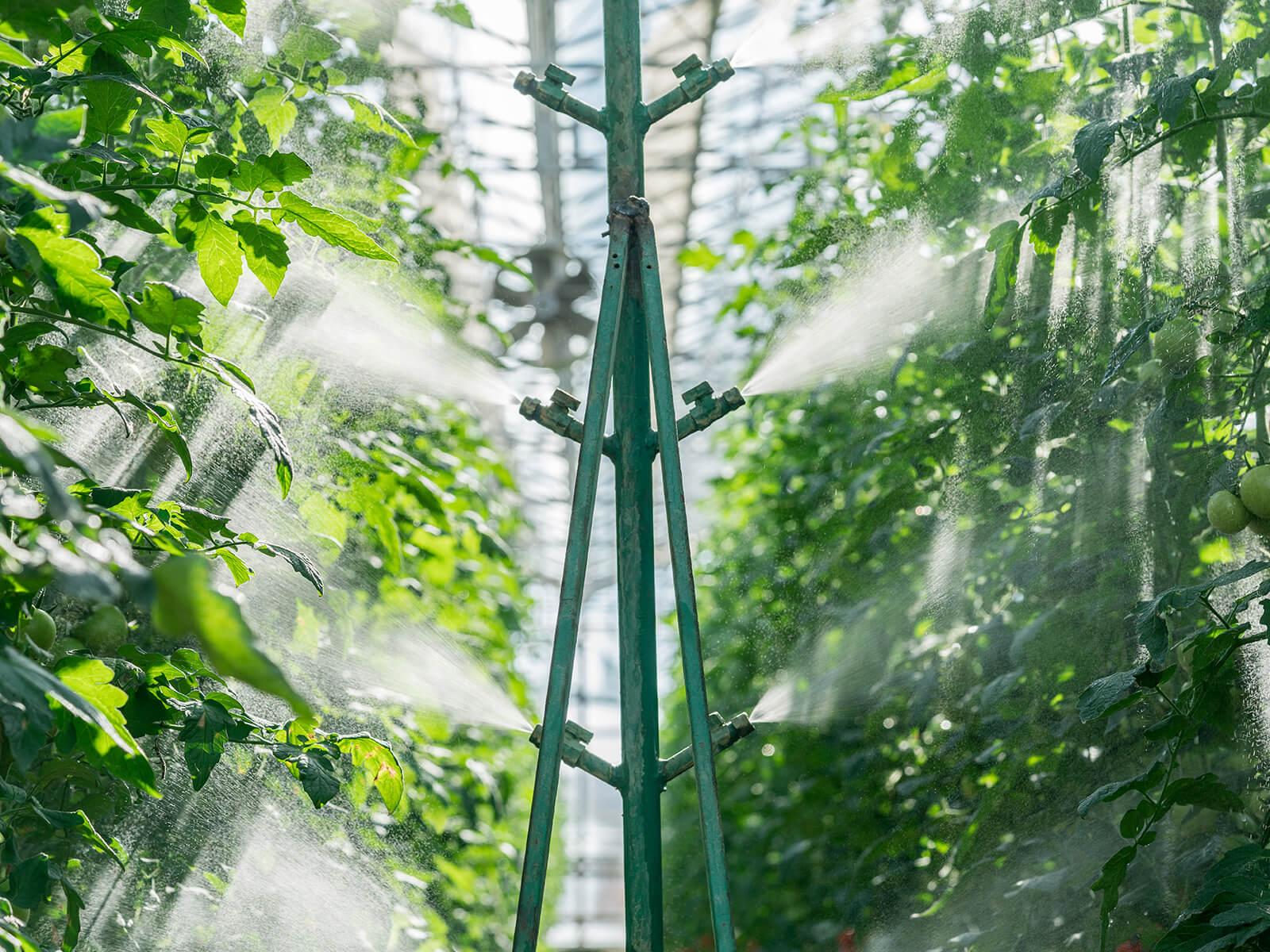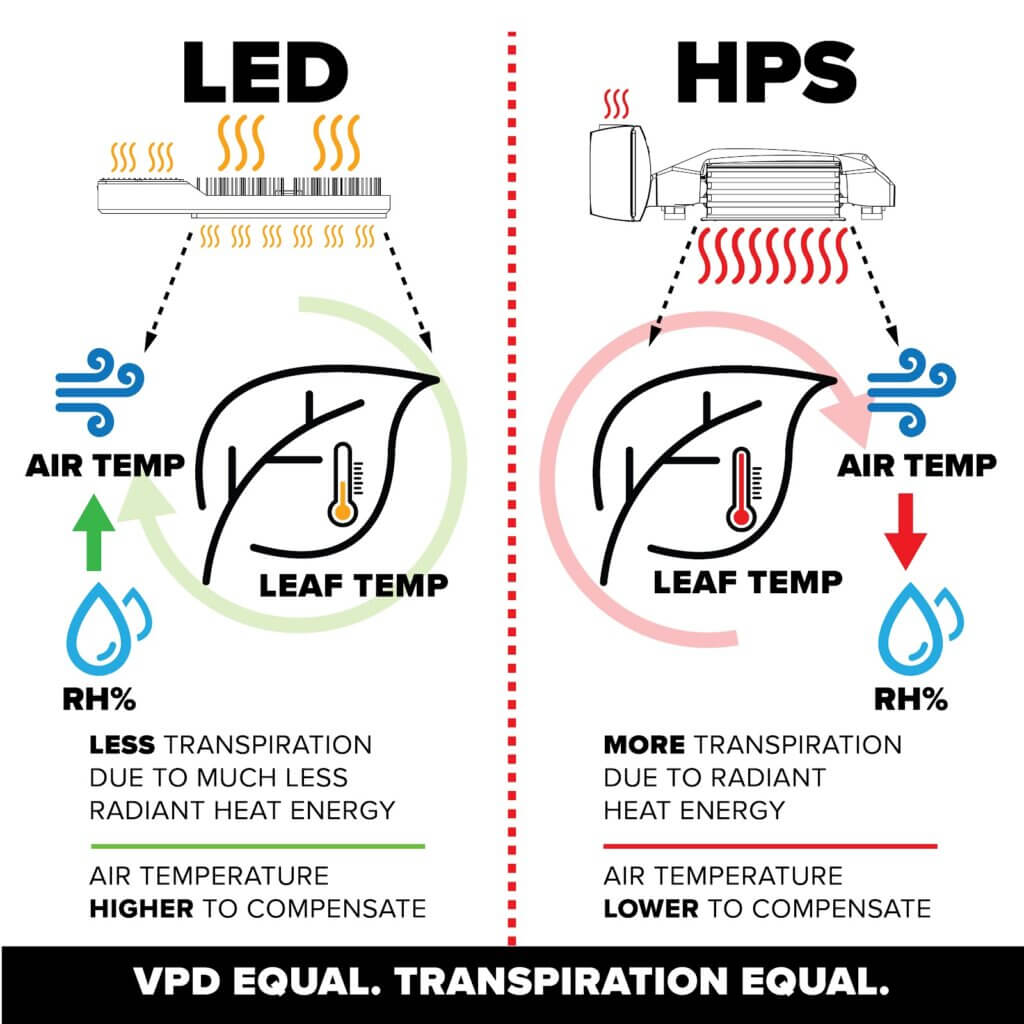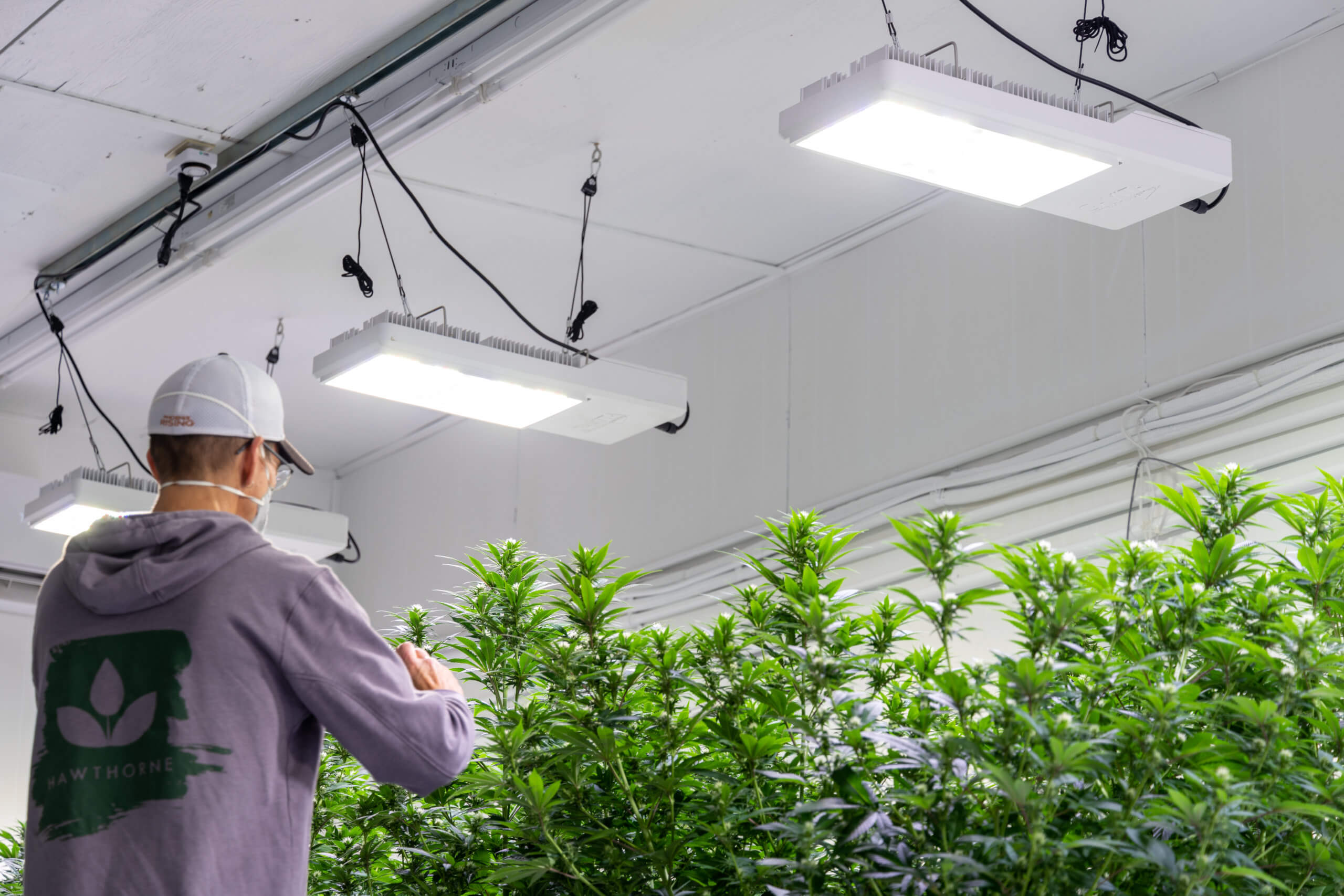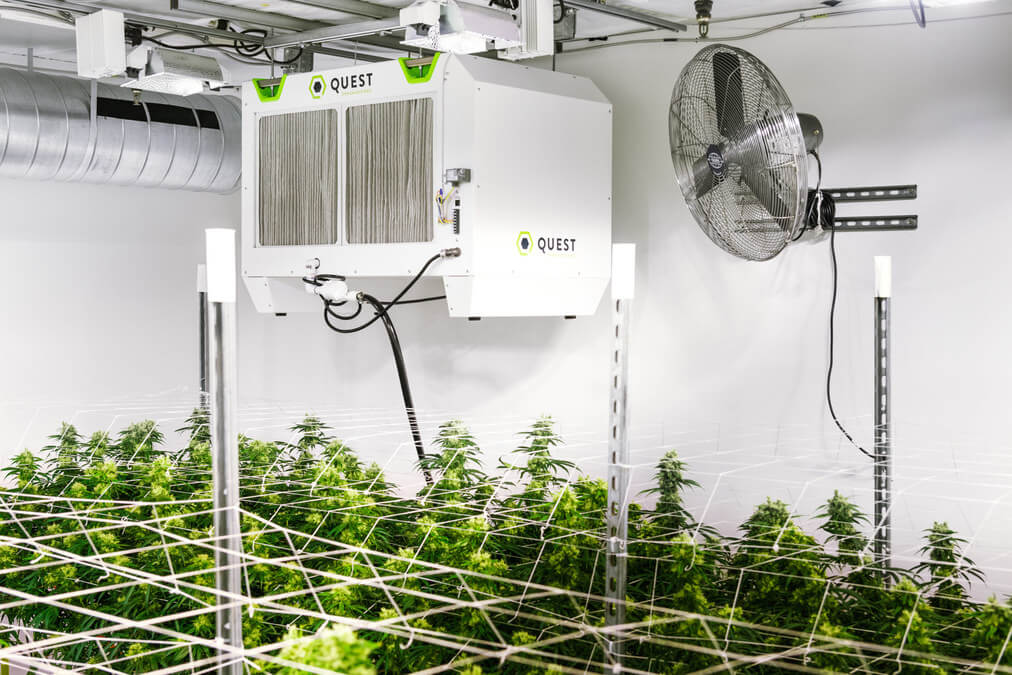In addition to monitoring and adjusting room temperature, it’s important to balance the other conditions, like moisture, in your space with a practice like VPD (vapor pressure deficit). Doing so can help promote maximum growth.
What is Vapor Pressure Deficit Management?
VPD is the difference (deficit) between the amount of actual moisture in the air and the amount of moisture the air can potentially hold when saturated. VPD is often measured in pounds per square inch (psi) or kilopascal (kPa).
When air is saturated with water, the VPD is 0 kPa. As VPD increases, the amount of water (or moisture) in the air decreases. A high VPD, considered greater than 1.0 kPa, indicates that the air can still hold a large amount of water.
The goal is to maximize how long the stomata are open during the day in order to keep transpiration and photosynthesis at the max. This is accomplished by maintaining a favorable VPD during peak stages of plant growth and development.
Because VPD is a function of both temperature and humidity, when we raise our ambient room temperatures, we must raise our humidity levels as well to stay within a favorable VPD range. Raising temperatures without raising humidity will have the opposite effect on the plant by creating stress and reducing growth.
VPD matters for two major reasons:
Disease. Moisture, or the lack thereof, can contribute to plant disease. This is because once air becomes saturated, water will condense to form a film of water on leaf surfaces. This in turn, can drive disease-causing spores to germinate and infect the plant tissue. A film of water on a plant leaf makes it much more susceptible to rot.
Transpiration. The gradient from the plant leaves (nearly saturated with water) and the air, drives transpiration. VPD more accurately expresses the driving force of water loss from a leaf. Unlike relative humidity, VPD has a simple, nearly straight-line relationship to the rate of evapotranspiration (water loss to the atmosphere by evaporation of water and transpiration from plants).
A VPD of zero means the air is 100% saturated and thus plants cannot transpire effectively. As VPD increases, transpiration increases accordingly.
This is why it’s recommended to keep VPD low for rooting cuttings or seed germination, and higher for finishing a crop and avoiding incidences of disease.
The goal is to maximize how long the stomata are open during the day in order to keep transpiration and photosynthesis at the max. This is accomplished by maintaining a favorable VPD during peak stages of plant growth and development.
Because VPD is a function of both temperature and humidity, when we raise our ambient room temperatures, we must raise our humidity levels as well to stay within a favorable VPD range. Raising temperatures without raising humidity will have the opposite effect on the plant by creating stress and reducing growth.
Disease Mitigation Tips and Tricks
Many growers are uneasy about raising their RH to 70%+, citing concerns around crop diseases like powdery mildew (PM) or botrytis grey mold. But by following a few recommendations, it’s possible to run high RH and temperatures while mitigating disease.
| Monitor temperature Most foliage diseases prefer cool, damp conditions to thrive. Keeping your ambient night temperature above 75° F is a good first step to keep diseases at bay. | Minimize fluctuations Sudden drops in nighttime temperatures can cause humidity spikes (particularly immediately following lights off). Keep the day/night temperature differential ≤10° F, to help prevent condensation on your crops’ leaves, which can lead to disease. | Keep air moving Air movement is critical for a healthy grow space. Lack of uniform, steady air movement can cause stagnant, humid pockets in your grow space, promoting disease. Proper airflow will help keep microfilms of moisture off leaf surfaces (via evaporation). |
| Adjust per growth phase For flowering crops, which are sensitive to bud rot, we recommend lowering RH (raising VPD) levels once flowers start to fill out and become dense. | Keep up with the canopy Defoliation or other canopy management methods can, and should, be employed to promote air movement deep into your crops’ foliage, further alleviating dead spots of ambient air. | Avoid overwatering Don’t keep pots saturated overnight. Ceasing irrigation events prior to lights off, and allowing for increased drybacks during the night, can be effective at mitigating large humidity spikes at night. |
Keep in mind: There is a balance between disease prevention and optimum plant growth and development. It’s important to understand your facilities’ limitations and make adjustments accordingly.
Continue learning with our next tip ⟶



